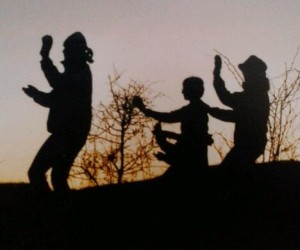Tai Chi is a system for health and self defence developed in China over thousands of years that uses exercise and self-awareness to improve the body, mind and spirit.
Our practice of this ancient system emphasizes health and spiritual benefits over martial applications. Graceful and dance-like, this gentle, meditative exercise develops the body through posture and breathing. Movement is slow and continuous. There are no complex twists or bends.
There are various styles of Tai Chi.
Tai Chi with the Inner Way School (Ecole de la Voie Interieure, Methode Stevanovitch) uses movement, relaxation, stretching and breathing routines from a number of traditions to deliver some of the benefits of the Yang style of Tai Chi.
Chi Kung health exercises are relatively static and introduce students to body movement and an awareness of their inner energy (Chi or Qi).
The main “exercise” in Tai Chi is called the Form – a series of movements that last between 20 and 45 minutes, developing skills and health at physical, mental and emotional levels. While different Forms derive from a range of Tai Chi schools and traditions, each movement can be used to develop a variety of skills and levels of awareness that can be integrated into other elements of the Form. Knowing the Form is less important than learning to follow it and experiencing the real physical effects of Chi on our being.
Tai Chi is pure pleasure: whether you already practise or are introducing yourself to Tai Chi, come and join us in sitting meditation, relaxation, chi work and slow standing movements Chi Kung and Tai Chi (Yang Short Form).

One difficulty about teaching or practicing Tai Chi is the fact that it DOES take so much time, when so many people want quick fixes and won’t take the time to be and to feel. Opening minds as well as bodies, that is the trick. Releasing something – in the mind and the body – using a concentration that fully engages the mind and the body, so that time appears to pass quickly as we explore the tension in the back of our knee or the tendency of our hip to drop on one side. Noticing the flow of our thoughts. Following our breath – every last particle of breath as it slows almost to a standstill – before starting up again. Allowing the explorative quality of repetition to take one through a 60 minute lesson where perhaps only two new elements are introduced. And coming away from the class feeling better than when one went in, that is important.
